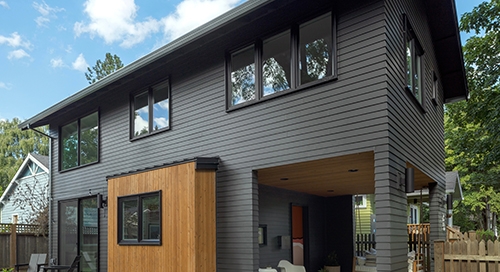Last year was a wild one, but not entirely unpredictable, as we forecast in December of 2021.
Like our recent unprecedented storms, the factors that led to the abrupt housing market shift in the second quarter of 2022, created the perfect storm for a change in the market—not a correction—a change or shift.

In Perspective
After the pandemic stay-at-home order created a need for more space to work from home with many home-schooling children, the new skyrocketing demand for single family homes caused prices to follow suit.
In the first quarter in 2022, we saw an unprecedented run up in home values in our area. Never in our history had home values risen so fast in such a short period of time.
This was to some degree anticipated, as it was widely announced that interest rates would be rising in the upcoming year—this on the heels of desperate attempts to secure a home in 2021 made for bidding wars outpacing sustainability.
In April of 2022, with mortgage interest rates rising to levels not seen since the same time in 2009 during the Great Recession, a pullback began as affordability suffered.
April sales logged the highest prices ever in our area’s history. These sales closed in May, making April technically the pinnacle of home values.
Then it began to slip.
Prices dropped each month-over-month, but-remained higher than a year earlier. In other words, the Year-Over-Year numbers until October remained higher than the previous year.
This is the YOY comparison for December of 2021 to 2022. In every category the housing numbers are unveiling a softening in the housing sector—prices are down, days on market are up, etc.

Note that the size homes selling in these two periods exaggerates the actual drop in values, while antithetically, the price per square foot underrepresents that delta.
We can make a rough “back of the napkin” adjustment, accounting for smaller homes selling in the two periods and skewing the median home price. Note that the median home price dropped 32% but so did the size homes which sold. Adjusting for this, the actual median home price is likely flat YOY, insofar as the median price anyway.
VARIABLES TO A 2023 HOUSING MARKET REBOUND
JOBS AND UNEMPLOYMENT
As one can see by this graph, unemployment in San Mateo County is at or near an all-time low:

Yet Tech specific lay-offs, effect our local housing disproportionally than elsewhere, as many local tech jobs are located on the Peninsula. When workers in the tech industry see companies laying workers off they tend to go into hibernation, avoiding any large purchases that require a long-term commitment.
STOCK OPTIONS
Many of these same companies offer sizable salary offsetting stock inducements. When there’s a hit to their portfolio, tech buyers will tend to wait it out for more favorable withdrawal conditions. And those who bite the bullet and cash out, lose buying power when their portfolio is down.

INTEREST RATES
While interest rate hikes shocked the system of buyers to their core, the initial wave began in January of 2022, enticing a lot of buyers who could see the writing on the wall to jump into the market to secure a low mortgage rate, even if doing so meant overpaying for a home.
Later, the rising rates had a real effect on housing, as we entered a return to normalcy—wiping out the entire first quarter of home value increases in a matter of months.

THE STALEMATE
Some buyers are holding onto the notion higher interest rates will continue to put downward pressure on home values, while sellers, still stuck in the first stage of grief—denial—are holding out for a return to the glory days of early 2022.
Who will blink first? It’s anyone’s guess. But the overall healthy economic conditions, despite the aforementioned variables, may lean in the favor of buyers returning to the market as soon as they feel confident and comfortable in the economic environment.
MOVING FORWARD
In an effort to thwart a complete housing melt down in 2007, the government bought bonds to drive down interest rates and the FED overnight rate was held at zero.
Buyers will no doubt soon begin to realize that they are not going to see artificially induced low mortgage rates again anytime in the foreseeable future—if ever, and will begin to accept the new reality.
Sellers will stop bemoaning missing the height of last year’s market, and eventually decide to move ahead with life’s plans.
Past performance doesn’t guarantee future results, but we can see patterns that emerge. We wouldn’t be surprised to see home values remain more-or-less flat for the year in 2023, and overall sales remain down.
Drew & Christine Morgan are REALTORS/NOTARY PUBLIC in Belmont, CA. with more than 30 years of experience in helping sellers and buyers in their community. As Diamond recipients, Drew and Christine ranked in the top 50 RE/MAX agents nationwide and the top 3 in Northern California. They may be reached at (650) 508.1441 or emailed at info@morganhomes.com.
For all you need to know about Belmont, subscribe to this blog right here. You can also follow us on Facebook and on Twitter.
The information contained in this article is educational and intended for informational purposes only. It does not constitute real estate, tax, insurance or legal advice, nor does it substitute for advice specific to your situation. Always consult an appropriate professional familiar with your scenario.





















